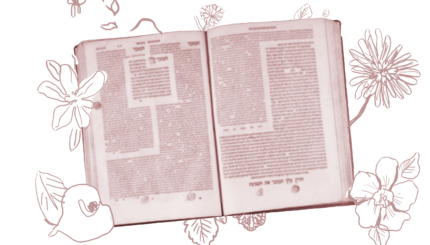On today’s daf, the rabbis discuss the rules for mikveh — a ritual immersion bath used for purposes of purification. These days, many of us reflexively think of immersion in a mikveh as the final step in converting to Judaism. The mikveh is also a place that some Jewish women go after their menstrual cycles or after giving birth so they can resume intimate relations and a place to immerse dishes to make them kosher.
In antiquity, however, the mikveh had many more functions. The Torah requires immersion after any kind of emission (seminal, menstrual, or abnormal) — and after coming into contact with a person who had such an emission or even a vessel with which they had contact — and after recovering from skin disease and after childbirth. It also requires immersion after contact with a corpse, human bone or grave, or after consuming carrion. In addition, the priests and particularly the High Priest in the Temple immersed regularly upon appointment and for ritual functions. Not surprisingly, archaeology reveals that mikvehs were prevalent in the Jewish world in antiquity.
There are also all kinds of complex rules for what counts as a kosher mikveh — in terms of its size, its placement, and the source of its water. A discussion involving the last comes up on today’s page.
In talmudic times, people would use cave water for ritual immersion. The water source was considered acceptable for ritual purification, but the water itself was often stinky. So afterwards, people would rinse themselves off with drawn water — that is, water collected in a vessel — which can’t be used for ritual immersion. This secondary rinse became such an established part of the ritual that the rabbis feared people would come to think that it was the drawn water, not the cave water, that was purifying — so they declared the drawn water impure.

Help us keep Jewish knowledge accessible to millions of people around the world.
Your donation to My Jewish Learning fuels endless journeys of Jewish discovery. With your help, My Jewish Learning can continue to provide nonstop opportunities for learning, connection and growth.
Rava raises a rather obvious objection:
What difference does it make if they say that? Ultimately, aren’t they immersing in the cave water? As long as they immersed themselves properly, it matters not if they misunderstand the reason. Rather, Rava said: The problem is that eventually they would say: The cave water is not what purifies; rather, the drawn water purifies. Therefore, the sages issued a decree prohibiting the use of drawn water after purification.
The rabbis here show a keen understanding of how rituals evolve over time. Sure, for now people will keep immersing and rinsing and their confusion about which waters purify won’t matter. But over time, that distinction is likely to be lost. People may come to assume that the clean waters are the purifying ones. Or find it onerous to immerse twice. Or find the use of stinky water for purification counterintuitive. Or any number of things. What people think they are doing might not matter if the ritual is done right, but it clearly does for the endurance of that ritual over time.
Read all of Shabbat 14 on Sefaria.
This piece originally appeared in a My Jewish Learning Daf Yomi email newsletter sent on March 20, 2020. If you are interested in receiving the newsletter, sign up here.



